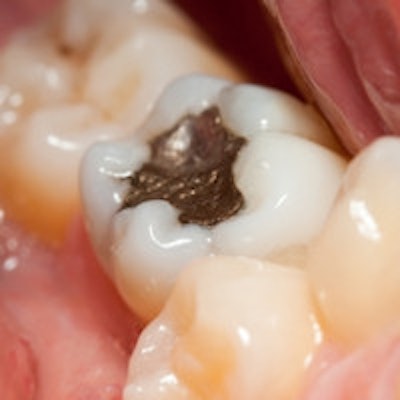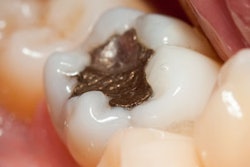
Restorations placed with amalgam had the lowest failure rate in a new retrospective study of 300 primary molar restorations in children in Ireland. Composite and glass ionomer restorations trailed restorations that used amalgam in success rates.
"With failures of restorations of the amalgam group representing less than 20% of all restoration failures, the findings in this study support the position that amalgam performs well in terms of efficacy," wrote lead study author Eimear Hurley, BDS, from the University Dental School and Hospital at the University College Cork in Ireland, and colleagues. "As with any dental restorative material, the benefits of amalgam should be considered against any potential health risks."
“As with any dental restorative material, the benefits of amalgam should be considered against any potential health risks.”
The study in the European Journal of Paediatric Dentistry (March 2015, Vol. 16) considered the notation of teeth, materials used for restorations, and whether it was a simple (single surface) or a complex (multisurface) restoration.
The teeth were divided into three groups of 100 primary molar teeth that had been restored by intracoronal restoration using amalgam, composite, or glass ionomer. The treatment was provided in an undergraduate clinical teaching program for children between 6 and 12 years old in Ireland.
Overall, almost twice as many second primary molars were restored compared with first primary molars, the study authors noted.
"This observation must be interpreted within the context of the present study which included only primary teeth that had actually been restored," they wrote. "It is widely accepted that first primary molars are more at risk from proximal caries and extensive lesions as a result of their smaller size."
Restoration failures and extractions
A restoration was considered a failure if it needed rerestoration or extraction before completion of the primary school program. Nearly 80% of restorations in primary teeth were successful in maintaining the tooth without further intervention, the researchers found. And in the 61 cases in which restorations failed, only 11 (3.7%) of the 300 restored teeth were extracted.
The researchers considered amalgam restorations the most successful, as only 12 of the 100 primary molars initially restored with amalgam were rerestored and only one was extracted. Among the composite resin restorations, 15 were rerestored and three extracted, while 24 were rerestored and seven were extracted in the glass ionomer group.
When comparing simple and complex restorations, they found that complex restorations had almost twice the restoration failure rate of simple single-surface restorations. These complex restorations also had a higher extraction rate.
Amalgam risks
The authors pointed to a comparative health risk evaluation of amalgam- and resin-based restorative materials that was presented at the 2013 Minamata Convention on Mercury. The report supports the World Health Organization's position in advocating a phase down of dental amalgam, but it also highlights the need for improvements in the quality of alternative materials.
They added that countries with low levels of dental disease have very limited use of amalgam, and since all currently available materials have their drawbacks, effective prevention is the optimal way forward.
"An independent large-scale study and multivariate analysis would be necessary to make valid comparisons between efficacy of filling materials and restoration types," the authors concluded. "With the progressive phase down of amalgam, the value of such a work would be in comparing performance and safety of the newer materials in primary teeth."



















